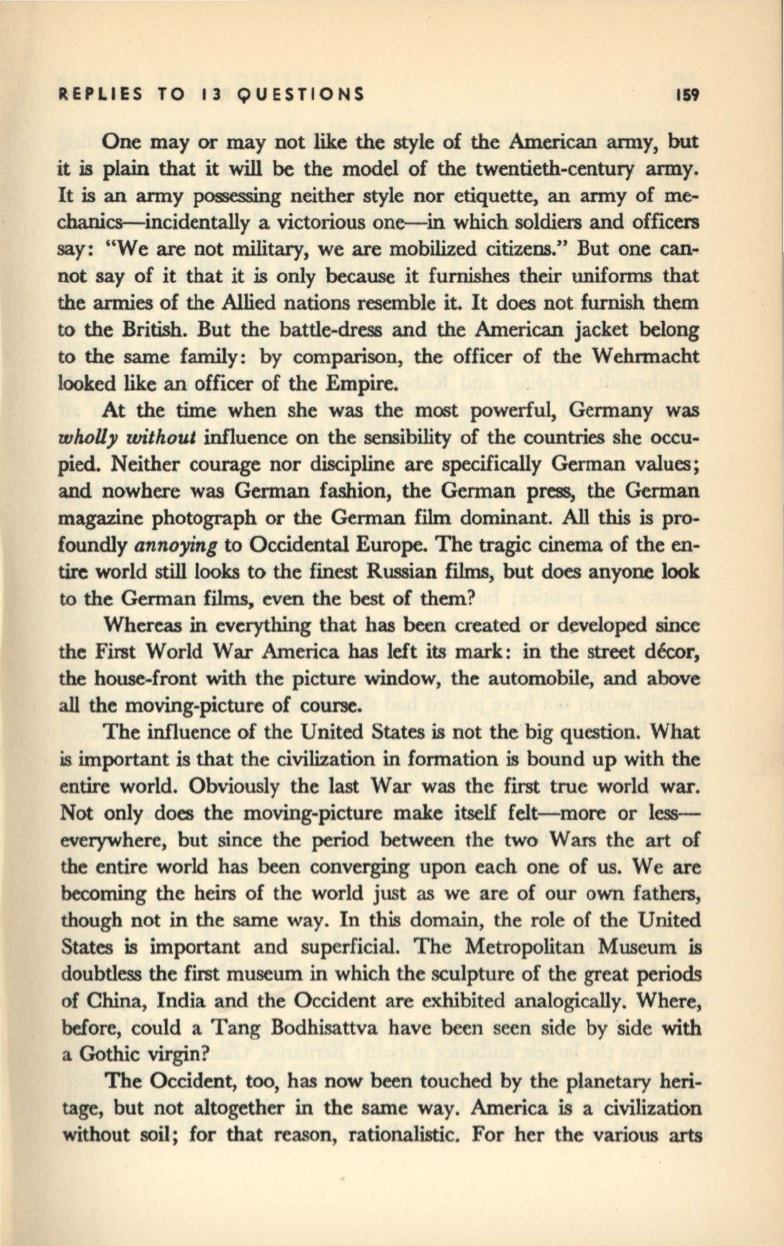
REPLIES TO 13 QUESTIONS
159
One may or may not like the style of the American anny,
but
it
is
plain that it
will
be the model of the twentieth-century army.
It
is
an army possessing neither style nor etiquette, an army of me–
chanics-incidentally a victorious one--in which soldiers and officers
say: "We are not military, we are mobilized citizens." But one can–
not say of it that it
is
only because it furnishes their uniforms that
the armies of the Allied nations resemble it. It does not furnish them
to the British. But the battle-dress and the American jacket belong
to the same family: by comparison, the officer of the Wehnnacht
looked like an officer of the Empire.
At the time when she was the most powerful, Gennany was
whoUy
without
influence on the sensibility of the countries she occu–
pied. Neither courage nor discipline are specifically German values;
and nowhere was German fashion, the Gennan press, the German
magazine photograph or the Gennan film dominant. All this is pro–
foundly
annoying
to Occidental Europe. The tragic cinema of the en–
tire
world
still
looks to the finest Russian films, but does anyone look
to
the German films, even the best of them?
Whereas in everything that has
been
created or developed since
the First World War America has left
its
mark: in the street decor,
the house-front with the picture window, the automobile, and above
all the moving-picture of course.
The influence of the United States is not the big question. What
is
important is that the civilization in fonnation
is
bound up with the
entire world. Obviously the last War was the first true world war.
Not only does the moving-picture make itself felt-more or less–
everywhere, but since the period between the two Wars the
art
of
the entire world has been converging upon each one of us. Weare
becoming the heirs of the world just as we are of our own fathers,
though not in the same way. In this domain, the role of the United
States
is
important and superficial. The Metropolitan Museum is
doubtless the first museum in which the sculpture of the great periods
of China, India and the Occident are exhibited analogically. Where,
before, could a Tang Bodhisattva have been seen side by side with
a Gothic virgin?
The Occident, too, has now been touched by the planetary heri–
tage, but not altogether in the same way. America is a civilization
without soil; for that reason, rationalistic. For her the various arts


